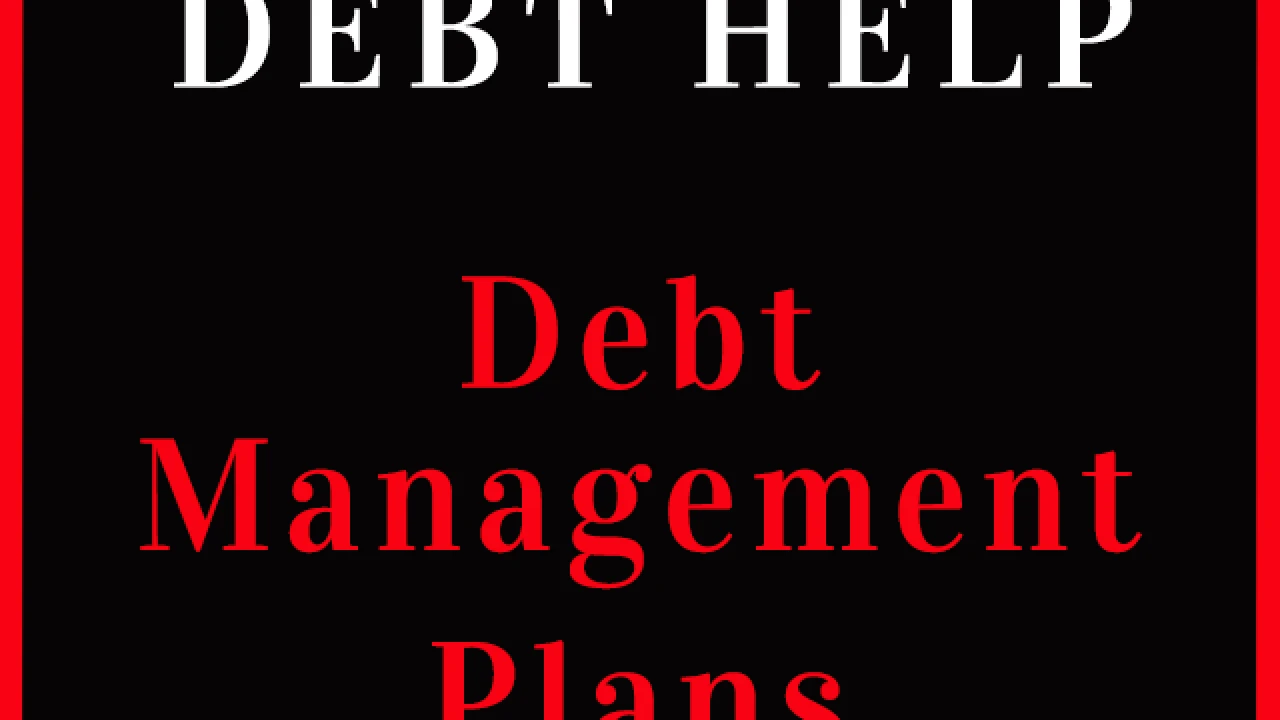Debt Management for Small Businesses
Explore effective debt management strategies tailored for small businesses to maintain financial stability.

Debt Management for Small Businesses Navigating Financial Stability
Running a small business is a rollercoaster, isn't it? One minute you're celebrating a big win, the next you're staring at invoices wondering how to make ends meet. Debt is often an unavoidable part of the journey for many small businesses, whether it's for startup costs, inventory, expansion, or simply bridging cash flow gaps. But here's the thing: debt isn't inherently bad. It's how you manage it that truly defines your business's financial health. Effective debt management isn't just about paying bills; it's about strategic planning, smart borrowing, and proactive problem-solving to ensure your business not only survives but thrives. This comprehensive guide will walk you through everything you need to know about managing debt for your small business, from understanding different types of debt to implementing practical strategies and exploring specific product recommendations.
Understanding Small Business Debt Types What You Need to Know
Before you can manage your debt, you need to understand what kind of debt you're dealing with. Small business debt comes in many forms, each with its own characteristics, risks, and benefits. Knowing the difference is crucial for making informed decisions.
Secured vs Unsecured Debt for Small Businesses
Let's start with the basics: secured versus unsecured debt. Secured debt means you've put up collateral – something valuable your lender can take if you don't repay the loan. Think of a commercial mortgage where your business property is the collateral, or an equipment loan where the equipment itself secures the debt. The upside? Secured loans often come with lower interest rates and larger borrowing limits because they're less risky for the lender. The downside? If things go south, you could lose your assets.
Unsecured debt, on the other hand, doesn't require collateral. Business credit cards, lines of credit, and many small business loans fall into this category. These are riskier for lenders, so they typically come with higher interest rates. While you won't lose specific assets if you default, your business's credit score will take a massive hit, and lenders can still pursue legal action to recover their money.
Common Small Business Debt Instruments Exploring Your Options
Now, let's dive into the specific types of debt instruments commonly used by small businesses:
- Term Loans: These are perhaps the most straightforward. You borrow a lump sum, and you repay it over a fixed period with regular payments, usually monthly, at a fixed or variable interest rate. They're great for specific, larger investments like purchasing equipment or expanding your premises.
- Lines of Credit: Think of this as a flexible credit card for your business. You're approved for a maximum amount, and you can draw from it as needed, repaying and re-borrowing. This is fantastic for managing cash flow fluctuations, covering unexpected expenses, or purchasing inventory. Interest is only paid on the amount you've actually used.
- Business Credit Cards: Similar to personal credit cards, these offer revolving credit. They're convenient for everyday expenses, small purchases, and building business credit. However, interest rates can be high, so it's crucial to pay off balances quickly.
- SBA Loans: These are government-backed loans, meaning the Small Business Administration (SBA) guarantees a portion of the loan, reducing the risk for lenders. This often translates to more favorable terms, lower interest rates, and longer repayment periods. They're a popular choice for startups and established businesses alike, but the application process can be more rigorous.
- Equipment Financing: If you need specific machinery or technology, equipment financing allows you to acquire it without a large upfront capital outlay. The equipment itself serves as collateral.
- Invoice Factoring/Financing: This is a lifesaver for businesses with long payment terms from clients. You sell your outstanding invoices (factoring) or use them as collateral (financing) to get immediate cash. While it provides quick liquidity, it can be more expensive than traditional loans.
- Merchant Cash Advances (MCAs): These are advances against your future credit card sales. You receive a lump sum, and the lender takes a percentage of your daily credit card transactions until the advance is repaid. MCAs are quick and easy to get, even with less-than-perfect credit, but they come with extremely high effective interest rates and can quickly become a debt trap if not managed carefully.
Proactive Debt Management Strategies for Small Business Success
Managing debt effectively isn't just about reacting to bills; it's about having a solid plan in place. Here are some proactive strategies to keep your business financially stable.
Creating a Detailed Budget and Cash Flow Forecast Your Financial Roadmap
This is the bedrock of all good financial management. A detailed budget helps you track where every dollar is going and coming from. It allows you to identify areas where you can cut costs, optimize spending, and allocate funds more efficiently towards debt repayment. A cash flow forecast, on the other hand, predicts your future inflows and outflows, helping you anticipate potential shortfalls and plan for them before they become crises. Tools like QuickBooks, Xero, or even a robust Excel spreadsheet can be invaluable here. For example, if your forecast shows a dip in revenue during Q3, you can proactively adjust your spending or explore a short-term line of credit to cover expenses, rather than being caught off guard.
Prioritizing High Interest Debt The Debt Avalanche Method
When you have multiple debts, it can be overwhelming to decide which one to tackle first. The debt avalanche method is a highly effective strategy. It involves listing all your debts from the highest interest rate to the lowest. You make minimum payments on all debts except the one with the highest interest rate, on which you pay as much extra as you possibly can. Once that debt is paid off, you take the money you were paying on it and apply it to the next highest interest rate debt. This method saves you the most money on interest over time. For instance, if you have a business credit card at 22% APR and an SBA loan at 7% APR, focus aggressively on the credit card first.
Negotiating with Creditors Don't Be Afraid to Ask
Many small business owners are hesitant to talk to their creditors, but it can be a game-changer. If you're struggling to make payments, reach out to your lenders *before* you miss a payment. They might be willing to work with you by offering:
- Temporary payment deferrals: A short break from payments to get back on your feet.
- Reduced interest rates: Especially if you have a good payment history.
- Extended repayment terms: Lowering your monthly payments by spreading them over a longer period.
- Debt restructuring: Combining multiple debts into one with more favorable terms.
It's always better to be proactive and transparent. Lenders would rather work with you than have you default entirely.
Building an Emergency Fund Your Financial Safety Net
Just like personal finance, an emergency fund is critical for small businesses. This is a reserve of cash specifically set aside to cover unexpected expenses or revenue dips. Aim for at least 3-6 months of operating expenses. Having this cushion prevents you from having to take on high-interest debt (like MCAs or high-APR credit cards) when unforeseen challenges arise, such as a major equipment breakdown, a sudden drop in sales, or a natural disaster. This fund acts as a buffer, allowing you to navigate tough times without jeopardizing your long-term financial health.
Optimizing Accounts Receivable and Payable Streamlining Your Cash Flow
Efficient management of your accounts receivable (money owed to you) and accounts payable (money you owe) directly impacts your cash flow and, consequently, your ability to manage debt. For receivables, implement clear invoicing procedures, offer early payment discounts, and follow up promptly on overdue invoices. For payables, negotiate longer payment terms with your suppliers if possible, and take advantage of any early payment discounts offered to you. Tools like QuickBooks or Xero can automate invoicing and payment reminders, significantly improving your cash flow cycle.
Debt Consolidation and Refinancing Smart Moves for Small Businesses
Sometimes, the best strategy is to reorganize your existing debt. Debt consolidation and refinancing can significantly simplify your financial life and reduce your overall costs.
Debt Consolidation Combining for Simplicity and Savings
Debt consolidation involves taking out a new loan to pay off several existing debts. The goal is to combine multiple payments into a single, more manageable monthly payment, often at a lower interest rate. This can free up cash flow and make it easier to track your obligations. For example, if you have three business credit cards with high interest rates and a small term loan, you might consolidate them into one larger term loan with a lower overall interest rate and a single monthly payment.
Refinancing Your Existing Loans Lowering Your Costs
Refinancing means replacing an existing loan with a new one, typically to secure a lower interest rate, extend the repayment period, or change the loan terms. If your business's credit score has improved since you took out your original loan, or if market interest rates have dropped, refinancing could save you a substantial amount of money over the life of the loan. For instance, if you have an equipment loan at 10% interest and you can refinance it at 6%, your monthly payments will decrease, and you'll pay less in total interest.
Recommended Products and Services for Small Business Debt Management
Let's get practical. Here are some specific products and services that can help small businesses manage their debt effectively, along with their typical use cases, comparisons, and general pricing information.
1. Business Term Loans for Consolidation and Refinancing
Use Case: Ideal for consolidating multiple high-interest debts into one lower-interest payment, or for refinancing an existing loan to get better terms. Also suitable for larger, one-time capital needs.
Product Recommendations:
- SBA 7(a) Loans: These are the gold standard for many small businesses due to their favorable terms.
- Pros: Low interest rates (often prime rate + 2.25% to 4.75%), long repayment terms (up to 10 years for working capital, 25 years for real estate), government guarantee reduces lender risk.
- Cons: Rigorous application process, can take several weeks or months to fund, strict eligibility requirements.
- Typical Pricing: Interest rates are capped by the SBA, usually ranging from 6% to 11% APR depending on loan size and term. Origination fees can apply.
- Comparison: Compared to conventional bank loans, SBA loans generally offer lower rates and longer terms, making them excellent for long-term debt management.
- Traditional Bank Term Loans (e.g., Chase, Bank of America, Wells Fargo):
- Pros: Established lenders, potentially lower rates for well-qualified businesses with strong credit and collateral, relationship banking benefits.
- Cons: Can be difficult for newer businesses or those with less-than-perfect credit to qualify, often require significant collateral.
- Typical Pricing: Rates vary widely based on creditworthiness, collateral, and market conditions, but generally range from 5% to 15% APR. Origination fees are common.
- Comparison: More accessible than SBA loans for some, but often with slightly higher rates or shorter terms if your business isn't perfectly positioned.
- Online Lenders (e.g., Funding Circle, OnDeck, BlueVine):
- Pros: Faster application and funding process (sometimes within days), more flexible eligibility criteria, good for businesses that don't qualify for traditional bank loans.
- Cons: Generally higher interest rates than traditional banks or SBA loans, shorter repayment terms.
- Typical Pricing: Rates can range from 8% to 35% APR or even higher, depending on the lender and your business's risk profile. Some charge factor rates instead of APR, which can obscure the true cost.
- Comparison: Best for speed and accessibility, but you pay for it with higher costs. Use these strategically for consolidation if the new rate is still significantly lower than your current high-interest debts.
2. Business Lines of Credit for Cash Flow Management
Use Case: Excellent for managing fluctuating cash flow, covering short-term operational expenses, or bridging gaps between receiving payments and paying suppliers. Can also be used to pay down high-interest credit card balances temporarily.
Product Recommendations:
- Traditional Bank Lines of Credit:
- Pros: Lower interest rates for established businesses, flexible access to funds, builds banking relationship.
- Cons: Can be harder to qualify for, often requires collateral or a personal guarantee.
- Typical Pricing: Rates typically range from 4% to 12% APR. Annual fees may apply.
- Comparison: The most cost-effective option for ongoing cash flow needs if you qualify.
- Online Lender Lines of Credit (e.g., BlueVine, Fundbox, Kabbage):
- Pros: Quick application and approval, often less stringent requirements than banks, good for businesses needing fast access to funds.
- Cons: Higher interest rates, sometimes weekly or daily repayments, can be more expensive if used frequently.
- Typical Pricing: Rates can range from 10% to 50% APR, or they might charge weekly/monthly fees that translate to high effective APRs.
- Comparison: More accessible and faster than banks, but crucial to understand the true cost. Use for short-term, urgent needs rather than long-term solutions.
3. Business Credit Cards for Everyday Spending and Rewards
Use Case: Managing daily expenses, earning rewards (cash back, travel points), building business credit, and providing a short-term buffer for small purchases. Can be used to pay off other high-interest debts if you can secure a 0% introductory APR offer.
Product Recommendations:
- Chase Ink Business Preferred:
- Pros: Excellent for travel rewards (3x points on travel, shipping, internet, cable, and phone services), strong sign-up bonus, good for businesses with significant spending in these categories.
- Cons: Annual fee ($95), requires good-to-excellent credit.
- Typical Pricing: APR typically 18.24% - 23.24% variable.
- Comparison: Best for businesses that travel or have high spending in specific categories and can pay off balances monthly to avoid interest.
- American Express Blue Business Cash Card:
- Pros: Simple 2% cash back on all eligible purchases up to $50,000 per year (then 1%), no annual fee, 0% intro APR for 12 months on purchases.
- Cons: Cash back cap, not ideal for very high spenders beyond the cap.
- Typical Pricing: 0% intro APR for 12 months, then 18.49% - 26.49% variable APR.
- Comparison: Great for everyday spending and leveraging the intro APR to pay down other debts interest-free for a year.
- Capital One Spark Cash Plus:
- Pros: Unlimited 2% cash back on every purchase, no preset spending limit (though it's not a credit card, it's a charge card that requires payment in full each month), strong sign-up bonus.
- Cons: Annual fee ($150), requires excellent credit, must pay in full monthly (not suitable for carrying a balance).
- Typical Pricing: No APR as it's a charge card.
- Comparison: Ideal for high-spending businesses that can consistently pay off their balance and want straightforward, high cash back rewards.
4. Invoice Factoring and Financing Services for Liquidity
Use Case: Businesses with slow-paying clients or long payment terms (e.g., 30, 60, 90 days) that need immediate cash flow to cover operational expenses or seize opportunities. Not a long-term debt solution but a short-term liquidity tool.
Product Recommendations:
- BlueVine Invoice Factoring:
- Pros: Quick funding (often within 24 hours), flexible terms, good for businesses with B2B invoices.
- Cons: Fees can add up, not suitable for all industries or invoice types.
- Typical Pricing: Factor rates typically start from 0.25% per week, which can translate to high effective APRs (e.g., 15% to 60%+).
- Comparison: A good option for fast cash against invoices, but understand the cost structure carefully.
- Fundbox Invoice Financing:
- Pros: Integrates with accounting software, quick decisions, good for smaller invoice amounts.
- Cons: Fees can be high, not available for all businesses.
- Typical Pricing: Fees can range from 4.66% to 7.99% of the invoice value for a 12-week repayment term, translating to high effective APRs.
- Comparison: Similar to BlueVine, offers quick access to funds but at a premium.
Avoiding Common Debt Traps for Small Businesses
While debt can be a powerful tool, it also comes with pitfalls. Being aware of these common debt traps can help you steer clear of financial trouble.
The Merchant Cash Advance (MCA) Trap High Costs and Short Terms
MCAs are notorious for their ease of access and speed, but they often come with extremely high costs. They're not technically loans but rather advances against future sales, repaid daily or weekly directly from your credit card transactions. The factor rates can translate to effective APRs well over 100%, sometimes even 300% or more. While they can provide quick cash in an emergency, relying on them regularly can quickly spiral into a debt cycle that's incredibly difficult to escape. Always calculate the true APR before considering an MCA.
Over-Leveraging Your Business Taking on Too Much Risk
It's tempting to borrow heavily for expansion or new projects, but taking on too much debt relative to your business's revenue and cash flow is a recipe for disaster. Over-leveraging leaves your business vulnerable to economic downturns, unexpected expenses, or a dip in sales. Always maintain a healthy debt-to-equity ratio and ensure your debt service coverage ratio (DSCR) is strong enough to comfortably cover your loan payments. A good rule of thumb is to keep your DSCR above 1.25, meaning your net operating income is at least 1.25 times your total debt payments.
Ignoring Your Business Credit Score The Hidden Cost
Your business credit score (and often your personal credit score, especially for smaller businesses) is paramount. A poor credit score will lead to higher interest rates, less favorable terms, and fewer financing options. Regularly monitor your business credit report (from agencies like Dun & Bradstreet, Experian Business, and Equifax Business) for errors and work to improve your score by paying bills on time, keeping credit utilization low, and maintaining a good mix of credit. Ignoring it means you'll always pay more for debt.
Lack of a Clear Repayment Strategy The Path to Default
Borrowing money without a clear, realistic plan for how you're going to pay it back is a common mistake. Every loan or line of credit should have a defined repayment strategy tied to your business's projected cash flow. Don't just assume future sales will cover it. Build a robust financial model that demonstrates your ability to service the debt under various scenarios. Without a strategy, you're essentially hoping for the best, which is not a sound business practice.
Final Thoughts on Small Business Debt Management
Debt management for small businesses is an ongoing process, not a one-time fix. It requires diligence, strategic thinking, and a willingness to adapt. By understanding the different types of debt, implementing proactive strategies like budgeting and debt prioritization, and leveraging appropriate financial products, you can transform debt from a potential burden into a powerful tool for growth. Remember, the goal isn't necessarily to avoid debt entirely, but to manage it wisely so that it serves your business's long-term success and financial stability. Stay informed, stay proactive, and keep your business thriving!
:max_bytes(150000):strip_icc()/277019-baked-pork-chops-with-cream-of-mushroom-soup-DDMFS-beauty-4x3-BG-7505-5762b731cf30447d9cbbbbbf387beafa.jpg)






